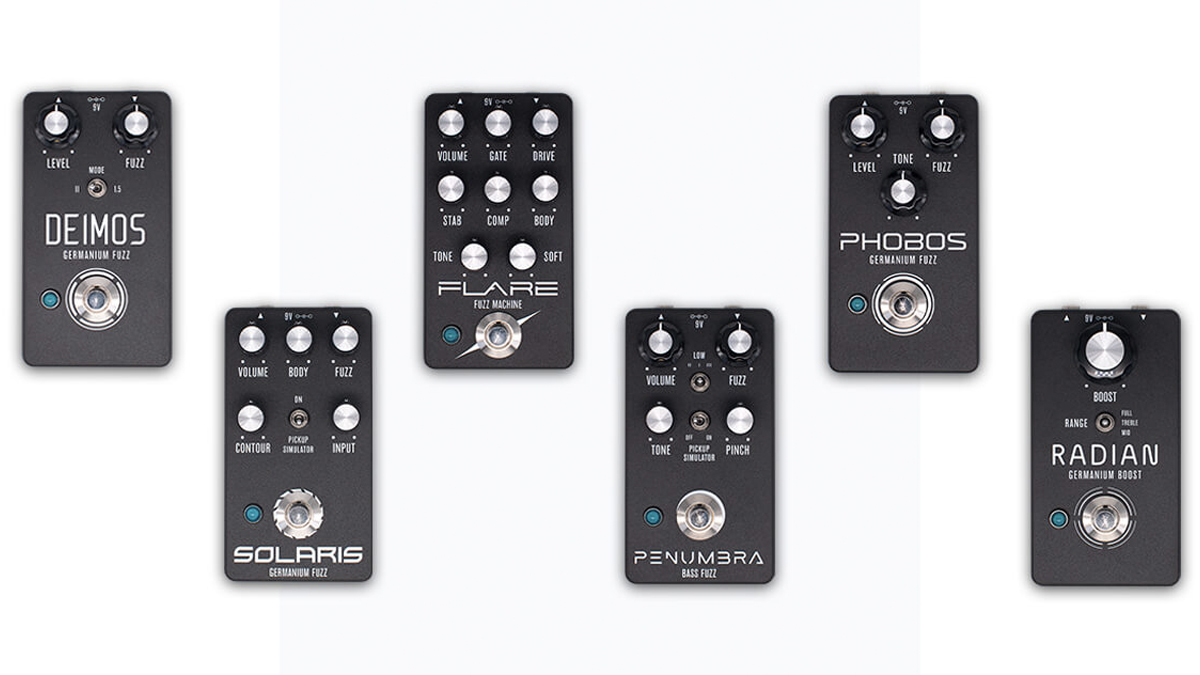Build your own Fuzz Face? Aion FX releases 6 circuits for DIY stompbox enthusiasts
Available as PCB-only or with matching enclosure and components, the new kits include designs inspired by vintage Tone Bender and Dallas-Arbiter Fuzz Face circuits and more

So you want to build guitar effects pedals? Well, one place to start might be at the hardware store, stocking up on the soldering iron, reverse-action tweezers, a multimeter and perhaps a solder pump for undoing things that went wrong.
And then you’ve got to sift the ether looking for components, those hard-to-find NOS germanium transistors, bucket brigade chips... It is a rabbit-hole.
There are, however, alternatives, and maybe a build-at-home DIY kit might be a better fit. In which case, Aion FX could well have you covered, having just released another six kits modelled after classic fuzz and treble boosters.
All six are available as a standalone PCB or with a finished enclosure and components, and hard-to-source germanium transistors are the theme for these releases.
There is the Deimos Germanium Fuzz, which is based on the Sola Sound Tone Bender Mk II Professional – the simple two-knob fuzz pedal that helped inaugurate fuzz as the must-have electric guitar sound upon its release in 1966.
Aion has made some tweaks, adding a voltage inverter so it can be powered by a standard centre-negative DC power supply, and there are internal trim pots for adjusting bias without resorting to a soldering iron.
Besides controls for Level and Fuzz, the enclosure has a toggle switch for selecting the Tone Bender ‘Mk1.5’ circuit, which is a capacitor away from the MkII.
Get the MusicRadar Newsletter
Want all the hottest music and gear news, reviews, deals, features and more, direct to your inbox? Sign up here.
The Phobos Germanium Fuzz sees Aion taking on the next-gen Tone Bender Mk III from ’67/’68, an altogether new circuit design at the time, with controls for Level, Tone and Fuzz.
Next up is the Solaris Germanium Fuzz. Again, this takes a ‘60s classic as inspiration but adds some new features, with a Dallas-Arbiter Fuzz Face augmented by three extra knobs.
The Solaris has controls for Volume, Body, Fuzz, Contour and Input, plus a switchable pickup simulator so you have more options on where to position it in the signal chain. The pickup simulator comprises a transformer, resistor and capacitor, and was designed by DIY pedal expert Jack Orman of AMZ, and deployed in the EarthQuaker Devices Erupter.
A more faithful Fuzz Face replica can be found in Aion’s Proteus PCB.
Those inspired by Brian May, Marc Bolan and Tony Iommi might find the Radian Germanium Boost to their liking.
This is a take on the Dallas Rangemaster Treble Booster which adds the voltage inverter and an internal bias trimpot. A three-way toggle selects between treble, mid and full-range boost.
The final two kits of Aion’s 2022 releases bring us up to the present day, with two takes on modern classics from Z.Vex. The Flare Fuzz Machine is a silicon/germanium hybrid in the style of a Fuzz Factory, while the Penumbra Bass Fuzz replicates the low-end silicon fuzz of the Woolly Mammoth and Mastotron units.
Like the pedal that inspired it, the Flare Fuzz Machine has a busy enclosure, with plenty of scope for shaping your sound.
There are controls for Volume, Gate, Drive, Stab, Comp, Body, Tone and Soft, and in the spirit of the Fuzz Factory these are all interactive. Helpfully, Aion provides some suggested settings, but part of the Fuzz Factory fun lies in the experimenting, and after assembling the pedal, well, what’s a little knob-twisting?
Here you have three more controls than on a standard Fuzz Factory, with Soft reducing the gain of the input boost, Body adjusting pre-fuzz low-end, and Tone setting treble cut after the fuzz.
As for the Penumbra, it is pretty much a Woolly Mammoth/Mastotron circuit with a switchable pickup simulator. And it sounds pretty radical, ideal for the low-end rip of Velcro.
It's not the first time we've seen the Woolly Mammoth/Mastotron circuit taking an evolutionary leap, with Z.Vex itself releasing the mini-pedal version in the shape of the Fuzzolo.
These DIY kits are available now direct from Aion FX, priced from $12 for the PCB, and $74 for the all-inclusive enclosure plus components. For more details, head over to Aion FX.
Jonathan Horsley has been writing about guitars and guitar culture since 2005, playing them since 1990, and regularly contributes to MusicRadar, Total Guitar and Guitar World. He uses Jazz III nylon picks, 10s during the week, 9s at the weekend, and shamefully still struggles with rhythm figure one of Van Halen’s Panama.
“A pedal that sings with harmonic richness and blooming touch response”: Tone King offers up boutique tube amp tones for your pedalboard with the Imperial Preamp
“Each and every unit is perfectly dialled in to the 'sweet spot' that can be so elusive to find in vintage pedals”: Pigtronix’s Gas Giant is a high-gain fuzz pedal with a FET-driven onboard noise gate










